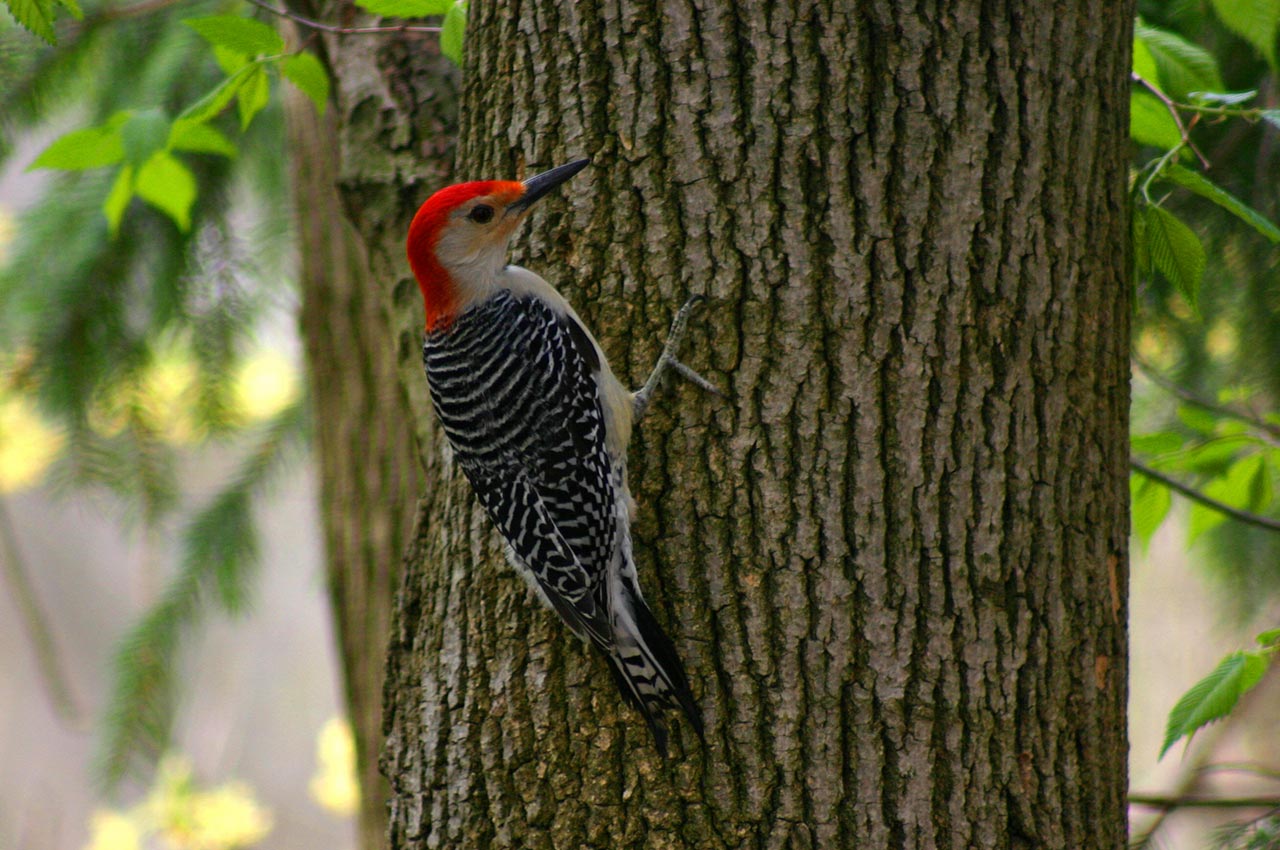Woodpeckers in Florida Population: Variety Introduction and Conservation
Woodpeckers in Florida Population: Variety Introduction and Conservation
Blog Article
Discover the Interesting World of Woodpeckers: Everything You Required to Know
The globe of woodpeckers is a world loaded with special habits, detailed adjustments, and a diverse variety of species. From their environments and circulation patterns to their feeding practices and specialized anatomical features, woodpeckers have long captivated the interest of ornithologists and nature lovers alike. Recognizing the intricacies of these remarkable birds provides a peek right into the complicated interaction in between their biology and the setting. As we explore the globe of woodpeckers better, we discover a wealth of information that clarifies their value in environments and the difficulties they encounter in an ever-changing world.
Woodpecker Habitats and Circulation
Woodpeckers inhabit a diverse variety of environments worldwide, showcasing flexibility in their distribution patterns. These durable birds are discovered in woodlands, forests, savannas, and deserts across various continents, showing their capability to thrive in different climatic conditions. In North America, for instance, woodpeckers can be found in both coniferous and deciduous woodlands, using their strong beaks to forage for bugs and create nesting cavities in trees. In Africa, particular woodpecker types have adapted to arid settings, such as the acacia woodlands, where they play an essential function in controlling insect populations.

Feeding Behaviors and Diet Regimen
Amongst the numerous elements of their actions, woodpeckers display distinctive feeding habits and dietary preferences. These birds are primarily insectivores, with a diet plan that includes ants, beetles, caterpillars, and other pests found in trees. Woodpeckers utilize their solid beaks to pierce right into the bark of trees, probing for bugs and larvae concealed below the surface area. Along with pests, woodpeckers also eat nuts, seeds, fruits, and sap. Some varieties have specialized tongues with barbed pointers that assist them draw out bugs from holes in wood.
Woodpeckers are known for their drumming actions, which offers not only to interact with other woodpeckers but likewise to situate food. The rapid drumming sound is produced by the bird pecking on resonant surface areas like see this page dead trees or metal posts. This habits can bring in bugs concealed in the wood, allowing the woodpecker to find their presence and prey on them.
Unique Adjustments for Tree Climbing
In their adept search of insects hidden within tree bark, woodpeckers have developed amazing physiological attributes that furnish them with unique adjustments for reliable tree climbing. Woodpeckers have solid neck muscle mass and an one-of-a-kind skull framework that take in the impact of continuous pecking, permitting them to climb up up and down without creating injury to their brains. These adjustments display the unbelievable evolutionary layout that makes it possible for woodpeckers to navigate trees with accuracy and effectiveness.
Diverse Woodpecker Variety Worldwide
With over 200 various varieties spread out across various habitats worldwide, the family members of Picidae includes a remarkable diversity of woodpeckers. These birds can be found in forests, forests, savannas, and even urban locations, showcasing their versatility to different environments. From the renowned Northern Flicker in The United States And copyright to the vibrant and elusive Crimson-backed Flameback in Asia, each woodpecker species displays distinct features in regards to quill, habits, and habitat choice.
Woodpeckers differ considerably in dimension, with the diminutive Downy Woodpecker determining around 6-7 inches in size, while the powerful Lineated Woodpecker can reach up to 17 inches - Woodpeckers in Florida. Their beaks also can be found in different shapes and sizes, mirroring their feeding routines. Some varieties specialize in extracting insects from tree bark, like the Acorn Woodpecker, while others, such as the Black-cheeked Woodpecker, feed on fruits and seeds

Conservation Efforts and Difficulties
Conservation initiatives for woodpecker populaces are vital in alleviating the effect of habitat loss and other dangers encountering these diverse bird species. Woodpeckers encounter numerous challenges to their survival, mostly as a result of logging, urbanization, climate change, and intrusive varieties. To resolve these issues, conservation efforts concentrate on securing and bring back woodpecker habitats, executing sustainable forestry practices, and raising recognition about the importance of these birds in communities.
One substantial obstacle in woodpecker preservation is the fragmentation of their environments, causing separated populaces that are extra at risk to extinction - Woodpeckers in Florida. Preservationists work to develop wildlife corridors and protected areas that connect these fragmented environments, permitting woodpeckers to move in between various locations for feeding, breeding, and official site sanctuary

Conclusion
In verdict, woodpeckers are remarkable birds with one-of-a-kind adjustments for tree climbing and feeding habits. They can be located in diverse habitats worldwide, encountering preservation difficulties because of environment loss and human tasks. Understanding their environments, diets, and actions is important for conservation efforts to safeguard these crucial bird species. More study and conservation actions are required to ensure the Visit Website survival of woodpeckers in the wild.
Report this page